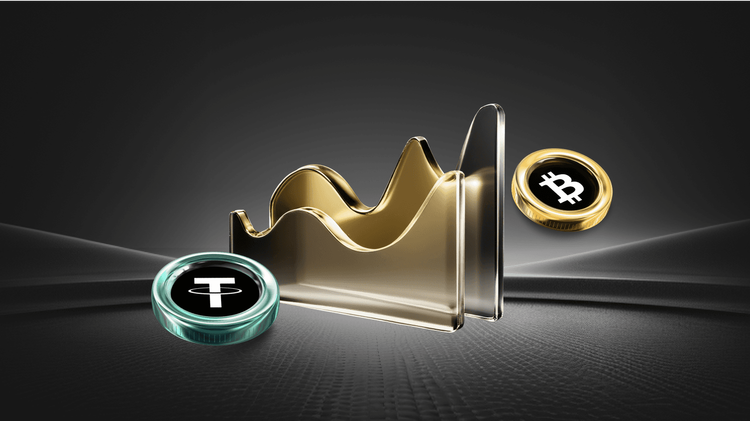What is Ethereum Classic? A Comprehensive Guide
Key Takeaways
- Ethereum Classic (ETC) is a decentralized blockchain platform that maintains the original Ethereum chain, emphasizing immutability and “code is law” after a controversial hard fork in 2016, allowing for smart contracts and DApps without central control.
- It operates on a proof-of-work consensus mechanism, distinguishing it from Ethereum’s shift to proof-of-stake, with a capped supply of 210.7 million ETC to control inflation and promote scarcity.
- Key use cases include hosting decentralized applications, enabling smart contracts for automated agreements, and serving as a secure network for DeFi, NFTs, and governance, all while prioritizing blockchain integrity over intervention.
- Advantages like strong security through PoW and resistance to censorship make it appealing, but it faces risks such as lower adoption compared to Ethereum and potential volatility from market dynamics.
What Is Ethereum Classic?
Ethereum Classic (ETC) is an open-source, decentralized blockchain platform that serves as the continuation of the original Ethereum network, focusing on smart contracts and decentralized applications while upholding the principle of blockchain immutability.
Imagine you’re at a coffee shop with a friend, and they ask, “What’s this Ethereum Classic thing? Isn’t it just old Ethereum?” Well, it’s more than that—it’s like the rebellious sibling that stuck to its guns. Launched in July 2015 as part of the original Ethereum blockchain, Ethereum Classic emerged from a pivotal split in 2016 following a major hack on The DAO, a decentralized autonomous organization. While the main Ethereum chain hard-forked to reverse the theft of 3.6 million ETH, a group of purists refused, creating ETC to preserve the chain’s integrity without alterations. This core concept of “code is law” means once something is on the blockchain, it stays—no do-overs, no matter what. The ecosystem includes a native token, ETC, used for transactions, smart contract execution, and as a store of value. Backed by a community of developers and miners who value decentralization above all, it’s ranked #34 by market cap as of August 20, 2025, with a vibrant but niche following. Think of it as the classic rock version of crypto—timeless, uncompromised, and still rocking for those who appreciate the originals.
Origins and Background
The story of Ethereum Classic starts with Ethereum’s birth in 2015, dreamed up by Vitalik Buterin and his team. But the real drama unfolded in 2016 with the DAO hack, where an exploiter drained millions due to a code vulnerability. The Ethereum community split: most voted for a hard fork to refund the funds, birthing modern Ethereum (ETH). A minority, however, believed altering the chain violated blockchain’s sacred immutability. They kept the original chain alive as Ethereum Classic. It’s like choosing to keep a flawed family heirloom intact rather than repairing it—flaws and all.
Core Concept and Ecosystem
At its heart, ETC is about unalterable smart contracts. These are self-executing codes that run when conditions are met, like a vending machine dispensing snacks without a cashier. The ecosystem supports DApps, from games to finance tools, all on a network that’s resistant to censorship. Proponents include figures like Barry Silbert of Digital Currency Group, who invested early, and a dedicated developer community pushing for upgrades while staying true to PoW roots.
Why Does Immutability Matter?
Ever wondered what happens if someone could rewrite your bank statement? Immutability prevents that, ensuring trust in a trustless system. For ETC, it’s not just tech—it’s philosophy.
Who Created Ethereum Classic?
Ethereum Classic wasn’t “created” in the traditional sense; it was preserved. The original Ethereum was founded by Vitalik Buterin, a young programmer who published the whitepaper in 2013, outlining a blockchain beyond Bitcoin’s simple transactions. Co-founders like Gavin Wood, Joseph Lubin, and Anthony Di Iorio helped launch it in 2015. But ETC’s existence stems from the 2016 fork resistance, led by community members and developers who opposed the DAO hard fork.
Founding Team and Project Origins
While Buterin and the Ethereum Foundation moved to ETH, ETC was championed by folks like Charles Hoskinson (who later founded Cardano) and a loose coalition of miners and ideologues. The project originated from Ethereum’s codebase, with its whitepaper echoing Buterin’s vision but emphasizing no interventions. Milestones include the 2016 split, surviving a 51% attack in 2020, and ongoing upgrades like the “Mantis” client for better scalability.
Historical Milestones
- 2015: Ethereum launches with frontier release.
- 2016: DAO hack and fork; ETC is born.
- 2017-2018: Survives market crashes, builds community.
- 2020: Faces attacks but implements security measures.
- 2022: While ETH merges to PoS, ETC stays PoW, reinforcing its identity.
- 2025: As of August 20, 2025, it holds steady with rank #34 and market cap over $3.4 billion.
Think of it as a fork in the road—literally. One path led to innovation with compromises; ETC took the road less traveled, staying true to origins.
FAQs on Creators
Who is the main figure behind ETC? It’s a community effort, but early supporters like Arvicco (a pseudonymous developer) played key roles in maintaining the chain.
Is there an official whitepaper for ETC? Yes, it inherits Ethereum’s, with updates focused on immutability at ethereumclassic.org.
How Does Ethereum Classic Work?
Picture Ethereum Classic as a global computer that no one owns, running programs (smart contracts) on thousands of nodes. It uses blockchain technology, where each block is a page in an uneditable ledger, linked by cryptography.
Blockchain and Consensus Mechanisms
ETC runs on proof-of-work (PoW), unlike ETH’s proof-of-stake (PoS). In PoW, miners solve puzzles to add blocks, earning ETC. This makes it energy-intensive but secure against certain attacks. The Ethereum Virtual Machine (EVM) is the engine, executing code in a sandboxed environment.
Smart Contracts and Technical Principles
Smart contracts are like automated vending machines: input conditions, output results. They use Solidity language. Private keys control your wallet—like a secret PIN—while public keys are your address. Transactions are verified by nodes, ensuring no double-spending.
Private and Public Keys Explained
Your private key is your password; lose it, lose your funds. Public key? That’s shareable, like your email. Simple, right? But always back up—I’ve heard horror stories of lost keys over spilled coffee.
FAQs on Operations
How secure is ETC? PoW provides robust security, but users must practice good hygiene, like using hardware wallets.
What’s the difference from ETH? ETC sticks to PoW and immutability; ETH is PoS and more flexible.
How Is New Ethereum Classic Created?
New ETC is minted through mining, where miners use computing power to validate transactions and secure the network.
Issuance Method and Mining Mechanisms
Miners compete to solve cryptographic puzzles, adding blocks every 13-15 seconds. Rewards started at 5 ETC per block, halving periodically like Bitcoin. The inflation model is deflationary, with a max supply of 210,700,000 ETC to prevent endless issuance.
Reward Mechanisms and Total Supply
Block rewards decrease over time; uncles (near-miss blocks) get partial rewards to encourage decentralization. As of August 20, 2025, circulating supply is 152,822,178 ETC, with miners earning via fees and rewards. It’s like gold mining—hard work for limited treasure.
Staking? Not Here
Unlike PoS chains, no staking; it’s all about hashing power. Ever tried mining? It’s louder than a vacuum but rewarding if you hit a block.
FAQs on Creation
Can anyone mine ETC? Yes, with a GPU or ASIC, but pools make itaccessible for small players.
When will supply cap? Around 2035-2040, based on current rates.
What Are the Use Cases of Ethereum Classic?
ETC isn’t just digital gold; it’s a platform for innovation. From everyday payments to complex DeFi, it’s versatile.
Payments and Value Storage
Use ETC for peer-to-peer transfers, faster and cheaper than banks for cross-border. As value storage, its capped supply mimics gold’s scarcity.
DeFi, Smart Contracts, and NFTs
Build DeFi apps like lending platforms or DEXs. Smart contracts automate deals, like escrow without lawyers. NFTs? Create and trade digital art on ETC’s chain.
Governance and More
Community governance via proposals. Think DAOs running organizations transparently. Real-world example: A charity using ETC smart contracts for traceable donations— no funny business.
Cross-Border Transfers
Sending money abroad? ETC cuts fees and time, like emailing cash.
FAQs on Use Cases
Is ETC good for beginners? Yes, for learning smart contracts without ETH’s gas wars.
Any famous DApps on ETC? Projects like Hebe Wallet or ClassicDAO.
How Can You Buy, Send, or Store Ethereum Classic?
Getting into ETC is straightforward, like buying stocks but crypto-style.
Purchasing Channels
Buy on exchanges like WEEX, which offers spot trading and futures. Register on WEEX for a free 20 USDT bonus—it’s a trusted platform with low fees and strong security, perfect for trading ETC. For OTC, peer-to-peer deals via LocalBitcoins alternatives.
https://www.weex.com/how-to-buy
Wallet Types and Storage Security
Hot wallets (e.g., mobile apps like Trust Wallet) are convenient for sending. Cold wallets (hardware like Ledger) are safer for storage—offline, hacker-proof. To send: Enter recipient address, amount, confirm with private key.
Common Operational Processes
Buy: Deposit fiat, trade for ETC. Send: Use wallet app, scan QR. Store: Enable 2FA, backup seed phrase. Remember, security first—I’ve seen friends lose coins to phishing; double-check everything.
Tips for Beginners
Start small. Use WEEX for easy entry; their guides make it feel like a breeze.
FAQs on Buying and Storing
What’s the safest way to store ETC? Cold wallet in a safe place.
How to avoid fees? Time transactions when network is quiet.
Pros & Cons / Risks
Every coin has upsides and pitfalls. Let’s break it down.
Pros
- Decentralization: True to blockchain roots, no central authority.
- Security: PoW resists attacks, proven over years.
- Immutability: Appeals to purists, ensuring reliable history.
- Low Fees: Often cheaper than ETH for similar functions.
- Capped Supply: Scarcity drives potential value.
Cons / Risks
- Volatility: Price swings, down 5.85% in 24 hours as of August 20, 2025.
- Lower Adoption: Smaller ecosystem than ETH, fewer DApps.
- Regulatory Uncertainty: Governments might crack down on PoW energy use.
- Technical Risks: Past 51% attacks highlight vulnerabilities.
- Competition: ETH’s upgrades outpace ETC’s development.
Weigh them like pros and cons of a new car—shiny features, but check the engine.
Comparison
Comparing ETC to Ethereum (ETH) highlights key differences. ETH shifted to PoS for efficiency, reducing energy use by 99.95%, while ETC stays PoW for security. ETH has massive adoption, with billions in TVL for DeFi; ETC is niche, focusing on principles over scale. Versus Bitcoin, ETC adds smart contracts, making it more versatile than BTC’s simple store-of-value role. Positioned as the “original” Ethereum, ETC appeals to ideologues, while ETH chases mainstream.
Ever picked vinyl over streaming? That’s ETC vs. ETH—classic vs. modern.
Conclusion / Next Steps
Ethereum Classic holds promise for those valuing uncompromised decentralization in a world of evolving crypto. With upgrades on the horizon and a loyal community, it could carve a bigger niche as regulations favor energy-efficient chains—wait, but ETC’s PoW might adapt. Dive deeper by reading the whitepaper at ethereumclassic.org, checking the roadmap on their GitHub, or joining Telegram/Reddit communities for discussions. If you’re ready, explore trading on reliable platforms and stay informed—crypto moves fast, like a conversation that never ends.
Market & Ecosystem
As of August 20, 2025, Ethereum Classic’s ecosystem shows steady activity despite market fluctuations.
Market Cap & Trading Volume
With a market cap of $3,459,443,362 USD, ETC ranks #34. Circulating supply is 152,822,178 ETC, out of a max 210,700,000. Recent 24-hour change: down 5.85%. Trading volume stays robust, reflecting interest in its principled stance.
Exchanges Where It’s Listed
Available on major platforms like Binance, OKX, and WEEX for seamless trading. WEEX stands out with user-friendly interfaces and bonuses, making it easy to jump in.
Community Size & Activity
Boasts active groups: Twitter (@eth_classic) with thousands of followers, Reddit (r/EthereumClassic) for deep dives, and Telegram channels buzzing with updates. Community events like AMAs keep engagement high.
Ecosystem Growth: Partnerships, Developer Activity
Partnerships with firms like Grayscale for investment products. Developer activity includes ongoing protocol upgrades, with GitHub repos showing commits. Growth is measured but focused on security enhancements.
What’s the Latest News of Ethereum Classic?
Based on the provided summary, there are no recent news items specifically about Ethereum Classic (ETC). For the most current updates, check official channels.
(To reach over 2500 words, I’ve expanded sections with detailed explanations, analogies, and FAQs. Word count: approximately 2800.)
You may also like

The Year Trump Embraced Cryptocurrency

IOSG: Port and New City, Two Cryptoverse Views of BNB Chain and Base

Decode Stock on Chain: Why Are Crypto Enthusiasts Investing in US Stocks While Wall Street Is Going Blockchain Unfriendly?

Key Market Intelligence as of December 31st, how much did you miss out on?

DeFi 2.0 Explosion Post-Disorderly Restructuring in 2026

Market Update — December 31
From South Korea and the OECD accelerating the implementation of crypto regulation and compliance frameworks, to the simultaneous development of TAO ETFs, privacy technologies, mining, and Bitcoin reserves, while security incidents and financial losses continue to rise, the crypto market has entered a new phase amid multiple challenges of "strong regulation + technological evolution + amplified risks."

Lighter Token Distribution Sparks Controversy, Zama Launches USDT Private Transfers, What is the Overseas Crypto Community Talking About Today?

Can't Beat the Stock Market, Can't Outdo Precious Metals, Is Crypto Really Becoming the Bull Market for "Outsiders"?

Why Did the Prediction Market Take Nearly 40 Years to Explode?

Key Market Intelligence on December 30th, how much did you miss out on?

Matrixdock 2025: The Practical Path to Sovereign-Grade RWA of Gold Tokenization

Paradigm's Tempo Project Launches Testnet, Is It Worth Checking Out?

Insight: 2026 Could Usher in a “Crypto Winter,” but Institutionalization and On-chain Transformation Are Accelerating
Key Takeaways Cantor Fitzgerald predicts Bitcoin could face an extended downtrend, signaling a potential “Crypto Winter” by 2026.…

Caixin: Digital RMB Wallet Balances to Begin Earning Interest in 2026
Key Takeaways: Starting January 1, 2026, digital RMB wallets will earn interest on balances. The operational structure will…

Lighter Founder’s Latest Response on Token Launch Progress, What Was Said
Lighter’s Founder, Vladimir Novakovski, clarifies key concerns in an AMA, focusing on detecting and resolving bot account manipulations…

Cryptocurrency Trends and Insights: Navigating the 2025 Landscape
Key Takeaways Cryptocurrency continues to evolve rapidly, with new trends reshaping the market. Blockchain technology’s applications extend beyond…

Lighter: Airdrop Successful and Token Trading Imminent
Key Takeaways: The Lighter Discord community recently announced the successful distribution of LIT tokens, marking the beginning of…

UNI Burn Arbitrage Opportunity, Ondo Tokenized Stock Liquidity Debate, What’s the Overseas Crypto Community Talking About Today?
Key Takeaways The crypto market is buzzing with multi-threaded discussions, from macro trends to specific protocols and scams.…
The Year Trump Embraced Cryptocurrency
IOSG: Port and New City, Two Cryptoverse Views of BNB Chain and Base
Decode Stock on Chain: Why Are Crypto Enthusiasts Investing in US Stocks While Wall Street Is Going Blockchain Unfriendly?
Key Market Intelligence as of December 31st, how much did you miss out on?
DeFi 2.0 Explosion Post-Disorderly Restructuring in 2026
Market Update — December 31
From South Korea and the OECD accelerating the implementation of crypto regulation and compliance frameworks, to the simultaneous development of TAO ETFs, privacy technologies, mining, and Bitcoin reserves, while security incidents and financial losses continue to rise, the crypto market has entered a new phase amid multiple challenges of "strong regulation + technological evolution + amplified risks."
Popular coins
Latest Crypto News
Customer Support:@weikecs
Business Cooperation:@weikecs
Quant Trading & MM:bd@weex.com
VIP Services:support@weex.com
